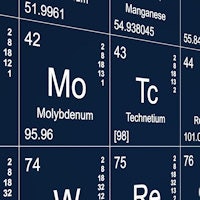
The year ahead, page 3
Ultrasound elastography to vie for growing clinical role
By Erik Ridley
One of the hottest technologies in ultrasound for 2016 will be elastography, which should continue to advance in a range of clinical applications, including breast, liver, thyroid, and musculoskeletal imaging.
Tumor imaging is a natural application for elastography, especially in the breast, said Dr. Levon Nazarian of Thomas Jefferson University.
"Elastography is particularly suited to finding firm structures in tissues that are less firm, so the breast is a perfect place for that," Nazarian said. "Breast cancers tend to be hard and the tissues around it tend not to be."
In addition to characterizing breast masses, ultrasound elastography is being looked at for assessing thyroid nodules, said Nazarian, who is also editor in chief of the Journal of Ultrasound in Medicine.
"Certainly anything we can do to help reduce the number of thyroid biopsies would be beneficial," Nazarian said.
The method is also demonstrating growing utility in the liver. Nazarian noted that hepatologists are very interested in determining the level of fibrosis in patients with chronic hepatitis. Thanks to improvements in ultrasound elastography technology among several manufacturers, it's now possible to determine how much fibrosis is present in a region of interest in the liver, he said. On the downside, reproducibility remains a challenge for this application.
The Holy Grail for ultrasound elastography, however, may be musculoskeletal imaging, according to Nazarian.
"Many of the conditions that we see in the musculoskeletal system are difficult to diagnose by any imaging test, yet they have as one of their manifestations a difference in texture, whether it be muscle, tendon, or ligament," he said. "Elastography has huge potential, not only in diagnosing musculoskeletal conditions before imaging can pick them up, but also to guide treatment to the abnormal areas and to follow up those areas afterward to determine the success of that treatment."
Ultrasound elastography will benefit this year from significant improvements, such as real-time feedback on the quality of both strain- and shear-wave elastograms, said Dr. Richard Barr, PhD, of Northeastern Ohio Medical University and Southwoods Imaging. Furthermore, more standardization across vendors will decrease user confusion over the different elastography techniques.
"This will improve the accuracy of elastography in multiple organs, especially for those who are less skilled in performing elastography," Barr said.
When used for diffuse liver disease, shear-wave elastography will also decrease the number of liver biopsies being performed, he said.
Barr noted that improved elastography software algorithms will also contribute to lower patient recall rates for breast cancer screening and significantly increase positive biopsy rates from supplemental ultrasound screening for breast cancer.
Medical isotope supply set for more solid foundation
By Wayne Forrest
It's possible that 2016 may be the year when the worldwide supply of medical isotopes will have a more solid foundation. New initiatives are reporting gains in the conversion of molybdenum-99 (Mo-99) to technetium-99m (Tc-99m), one of the most commonly used radiopharmaceuticals.

Driving the developments is nuclear medicine's reliance on an aging supply chain for molybdenum-99, which traditionally has been produced using highly enriched uranium at a nuclear reactor. The fragility of the system has been demonstrated several times in the past decade, such as in 2008 and 2009, when shutdowns at the National Research Universal (NRU) reactor in Chalk River, Ontario, led to shortages of molybdenum-99 and technetium-99m in North America.
A better system would have a more distributed supply chain with smaller point sources, in addition to not relying on highly enriched uranium, which is a weapons-grade form of uranium that is considered a national security risk.
There are several projects to watch in 2016. One of them is a collaboration between GE Healthcare and Shine Medical Technologies, which has successfully obtained pharmaceutical-grade Tc-99m from GE's Drytec Tc-99m generator using Mo-99 produced by Shine.
Meanwhile, NorthStar Medical Radioisotopes has begun routine production of Mo-99 at the University of Missouri Research Reactor (MURR) facility in Columbia, MO. NorthStar has received $12 million in funding from the U.S. Department of Energy for its Mo-99 project, and it has also signed an agreement with Westinghouse Electric to explore the production of isotopes in commercial reactors.
In addition, Perma-Fix Medical is developing a method for producing Tc-99m that does not require uranium, making it a more environmentally friendly alternative, should it come to fruition. Also, superconducting accelerator technology firm Niowave has completed its first production run of Mo-99 by splitting uranium.
Not to be outdone, the Centre de Recherche of the Hospitalier Universitaire de Sherbrooke (CHUS), the University of Alberta, and Advanced Cyclotron Systems have affirmed that their use of cyclotron-produced Tc-99m achieves image quality equivalent to that of Tc-99m manufactured in a nuclear reactor.
3D printing to move from toy to tool in 2016
By Eric Barnes
In 2016, expect to see 3D printing begin to shed its reputation as an intriguing toy and develop into a useful tool that has a wide range of applications.
 Image courtesy of MIT and Boston Children's Hospital. Photo credit: Bryce Vickmark.
Image courtesy of MIT and Boston Children's Hospital. Photo credit: Bryce Vickmark.The progress of 3D printing was nowhere more evident than at the RSNA 2015 show, where special exhibits highlighted the technology's growing prowess. Custom prostheses are being designed with the help of 3D printing for wounded warriors who have lost limbs, while 3D technology is also being used for better breast reconstruction in breast cancer patients.
Look for 3D printing to become a standard part of the workup for congenital heart surgery, and to be increasingly explored for planning other cardiac surgeries as well. Solid organs such as kidneys will see increased use of 3D printing this year as well.
All vendors will incorporate the stereolithography (.stl) file format used for 3D-printed structures as a standard for CT and MR applications of the technology. 3D printing will be increasingly applied to areas as diverse as breast reconstruction surgery and virtual surgery training modules, and as a guide to highly complex procedures such as the recent successful separation of conjoined twins and other precision medicine applications.
The range of plastics available for 3D printing will continue to evolve and improve. Finally, look for continued development of 3D-printed models as a platform for tissue regeneration.
Previous page | 1 | 2 | 3



















